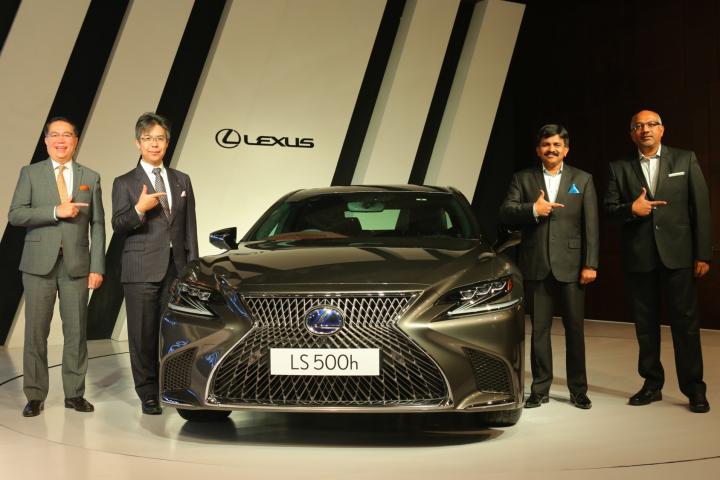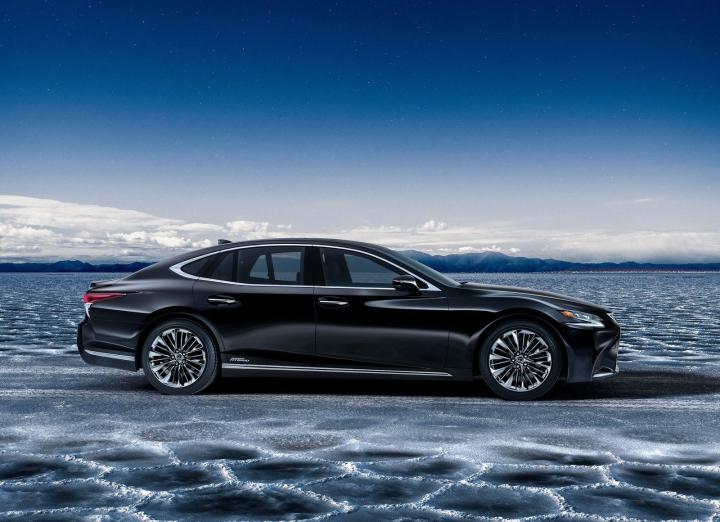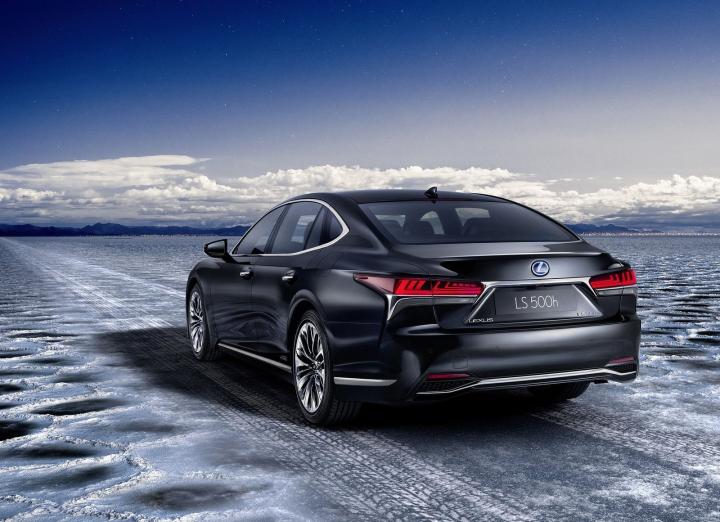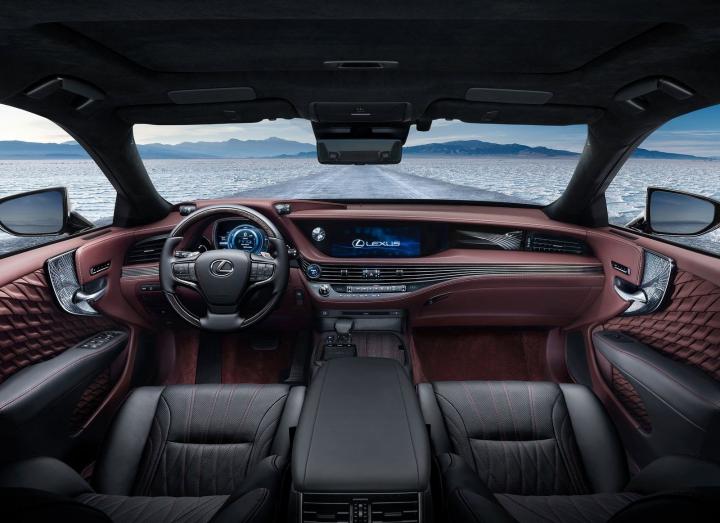News
Toyota C-HR hybrid SUV spotted in India
The Toyota C-HR hybrid SUV has been spotted testing on the outskirts of Bangalore.
The Toyota C-HR was first launched in Japan in December 2016. It is based on the Toyota New Global Architecture (TNGA) and is offered with a hybrid powertrain in the international market. The C-HR has a slim front grille finished in black flanked by large sweptback headlamps with integrated LED DRLs. The front bumper houses a wide air dam with circular fog lamps on either side. It has flared wheel arches and a sloping roofline. The rear of the SUV features a steeply raked windshield and a roof spoiler. It gets boomerang-shaped tail lights and a dual-tone rear bumper.
On the inside, the C-HR gets all-black interiors with coloured accents. It has a 3-spoke multi-functional steering wheel, a twin-pod instrument cluster and touchscreen infotainment system on the centre console.
The hybrid version of the C-HR uses a 1.8-litre, 4-cylinder petrol engine and an electric motor that is paired with a continuously variable transmission (CVT). The combined output is 121 BHP and 305 Nm of torque.
There has been no word yet from Toyota regarding the launch of the C-HR hybrid SUV in India, however reports suggest that it could be launched around the year 2020-21.
Source: Autocar India
- Tags:
- Indian
- C-HR
- Hybrid Vehicles
- hybrid
- spy shots
News
USA: 3rd-gen Volvo S60 launched
Volvo has launched the third-generation S60 sedan in the USA at prices starting from US$ 35,800.
The new S60 measures 4,761 mm in length, 1,850 mm in width and 1,431 mm in height with a wheelbase of 2,872 mm. The car gets a grille with vertical slats and a silver border, flanked by Thor's hammer LED lights. The bonnet gets a central bulge that aligns with the edge of the grille. The front bumper features fog lamp housings with chrome inserts and a trapezoidal air dam. The sides of the car get a couple of creases on the lower edges of the doors. The windows are surrounded by a slim chrome strip. The rear features C-shaped LED tail lights, "VOLVO" lettering on the boot lid, and dual exhaust tips.
The interiors of the S60 are finished in a dual-tone beige and black theme or an optional all-black theme. The dash gets a vertically mounted infotainment screen and vertical air-conditioner vents. The steering wheel is a 3-spoke multifunction unit with paddle shifters. The centre console features a drive mode controller. The car's boot space is rated at 442 litres.
The S60 is the first Volvo to be offered without an option of a diesel engine. The car comes with a choice of 3 petrol engines - a 2.0-litre turbocharged engine producing 247 or 250 BHP and 350 Nm of torque, a 2.0-litre, turbocharged and supercharged engine developing 306 or 316 BHP and 400 Nm of torque, and the same engine combined with an electric motor (plug-in hybrid) making 385 BHP or 395 and 500 Nm of torque. A Polestar option is also available on the top variant, which bumps up the power to 399 BHP and torque to 430 Nm. All engines are mated to an 8-speed automatic transmission. Except for the base (T5) variant, all variants get an all-wheel drive system.
On the safety front, the S60 supports auto braking at city speeds for collision mitigation, run-off road mitigation, steering assistant, lane assistant, and cross traffic alert. The car also gets an optional pilot assist system, that Volvo claims can take over the steering, acceleration and braking of the car at speeds up to 128 km/h.
Volvo has also inaugurated its first American plant in which the S60 will be built. It is located outside Charleston, South Carolina. The company also launched a subscription-based model called Care, which will offer Volvo cars at a flat monthly fee inclusive of insurance, routine maintenance and no down payment. Mid variants of the S60 will be offered through this subscription model. The company is also offering Polestar variants of the sedan only through the Care subscription model.
News
Rumour: Kia plans to launch its first EV in India by 2021
Kia Motors India is planning to build electric vehicles (EV) and hybrids at its upcoming facility at Anantapur in Andhra Pradesh and will reportedly launch its first EV in India by 2021.
The carmaker has currently lined up 3 products for the Indian market. Their first offering will be a compact SUV based on the SP Concept. It is likely to be called Tusker and will compete with cars like the Hyundai Creta and the Renault Duster. The company plans to build 2 more SUVs in India, which includes a sub-4 metre SUV.
Kia is also considering a few other models from its global line up for India. These include SUVs like the Sportage and Sorento, which could be imported via the CKD route. Recently, there have been reports of Kia evaluating the Grand Carnival MPV and the Stonic compact SUV as well. At present, the company is conducting a market study to find out which model from its global portfolio could be localized and launched in India.
Meanwhile, 65% of the construction at Kia's new manufacturing facility has been completed.
Source: Economic Times
News
Porsche Cayenne E-Hybrid launch in September 2018
Porsche debuted a hybrid variant of the third generation Cayenne earlier this month. The new Cayenne E-Hybrid will be launched in the Indian market in September 2018.
The 2018 Cayenne E-Hybrid is based on VW's MLB platform. It measures 4,918 mm in length, 1,983 mm in width and 1,696 mm in height, while its wheelbase is 2,895 mm. The SUV offers 645 litres of luggage space, which can be expanded to 1,610 litres by folding the rear seats, while fuel tank capacity is 75 litres.
The exterior styling of the Cayenne E-Hybrid is similar to the non-hybrid models. The third generation model has been given a redesigned front fascia with re-profiled LED headlamps and a new front bumper with a 3-part grille and air dam. The SUV has a coupe-like side profile and a roofline that terminates into a roof spoiler. The rear end features quad exhaust tips and the new LED light bar that stretches across the tail gate. The only way one can differentiate the hybrid from the non-hybrid variants are the green e-hybrid badges and matching green brake calipers. The interior features a redesigned, dual-tone dashboard with a touchscreen in the centre and a 3-spoke, multi-functional steering wheel with a 3-pod instrument cluster.
Under the hood, the Cayenne E-Hybrid is powered by a 3.0-litre, V6 petrol engine that produces 335 BHP @ 5,300-6,400 rpm and a peak torque of 450 Nm @ 1,340-5,300 rpm. In addition to the internal combustion engine, the E-Hybrid has a 14.1 kWh battery and an electric motor with an output of 134 BHP and 400 Nm, which results in a combined output of 456 BHP and 700 Nm. The powertrain is mated to an 8-speed automatic transmission. The claimed fuel economy of the new Cayenne E-Hybrid is 29-31 km/l.
In the international market, the Cayenne E-Hybrid comes with features like Porsche Traction Management (PTM) which includes active all-wheel drive, automatic brake differential (ABD) and anti-slip regulation (ASR). It also comes with Porsche Stability Management (PSM) and ABS. Porsche Active Suspension Management (PASM) is standard however, Porsche Dynamic Chassis Control (PDCC) is offered as an option.
- Tags:
- Indian
- Cayenne
- Hybrid Vehicles
- hybrid
News
Volvo plans local assembly of hybrid vehicles in India
According to a recent media report, Volvo is planning to start local assembly of hybrid vehicles in India. In addition to hybrids, the company is also considering additional models from its non-hybrid line up for local production in the next 2-3 years.
Charles Frump, MD, Volvo Car India has told the media that it is currently evaluating the possibility of building hybrids locally. The carmaker is also in talks with the government to create a favourable environment for the sale of hybrid vehicles in India, which will be a stepping-stone towards electric vehicles (EV).
Currently, the XC90 and S90 are locally assembled at Volvo's manufacturing facility near Bangalore. The company plans to start locally assembly of the XC60 and V90 Cross Country sometime around 2019. Meanwhile, the XC40 compact SUV is likely to be launched later this year. Volvo might build the XC40 in India in order to compete with rival brands.
Volvo's first electric car is scheduled for launch in 2019. Moreover, by 2025, the company is aiming to sell 1 million EVs globally and that includes India. Maruti and Toyota have already announced their plans to launch their first EV in India in 2020. Hyundai too has shown interest in the EV space and plans to start local assembly of EVs by 2019.
Source: Economic Times
News
Lamborghini Aventador replacement to get hybrid powertrain
The Lamborghini Aventador is currently the oldest car in the company's line-up, making it next in queue for a replacement. According to a media report, the Aventador replacement will be powered by a naturally aspirated V12 combined with an electric hybrid system.
Maurizio Reggiani, Lamborghini’s chief technical officer, told the media at the Geneva Motor Show that while the company is using turbo charged engine for its Urus SUV, it would continue to offer natural aspiration in their flagship car. Further, the new car will make extensive use of carbon-fibre components and will also feature some sort of hybrid drive.
The electric boost from the hybrid drive could either be used in short bursts (Corsa mode) or for long range (Strada mode). While the exact nature of the electric system is not yet known, it could be used to meet the rising emission restrictions that could be imposed in city centres and other places in Europe and Asia. The system could also be used to supplement the engine to provide uninterrupted power to the wheels during a mid-corner downshift or in low gears. Unlike rivals, the single clutch gearbox used in the Aventador is comparatively slower to change the gears.
Reggiani also revealed that while the company will eventually shift to all-electric cars, it would only be after multiple iterations of the hybrid cars.
Source - Car and driver
News
Toyota to cease diesel car sales in Europe
Toyota has revealed that from this year onwards, the company will start phasing out diesel engines from all its passenger cars in Europe. The move comes at a time when the company has reported a fall in the sales of the diesel engine vehicles. The numbers for the hybrid vehicles on the other hand have gone up considerably.
Toyota Motor Europe CEO, Johan van Zyl, revealed at the Geneva Motor Show that diesel would be phased primarily based on customer demand. According to the 2017 numbers from the company, sales of the diesel cars in Europe have fallen to mid-10%, while those of the hybrid cars have gone up to 41% in just 2 years, with a year-on-year growth of 38%. This new plan from the Japanese automaker will not only cover Europe, but also Russian and Turkish markets. It must be noted that Toyota will continue to offer diesel engines on its commercial vehicles like the Hilux, Proace and Land Cruiser.
Additionally, regulation in Europe requires automakers to limit the average CO2 emissions below 95 grams/km in 2021. Toyota aims to meet this by raising the total share of hybrid car sales to over 50% and launching all-electric vehicles by 2020. For now, the company will release its Auris (Corolla based hatchback) without any diesel option while offering two hybrid options in Europe.
News
Hyundai India to launch electric vehicles in 2019
Hyundai will invest over $1 billion in India over the next 3 years. The carmaker has announced that it is planning to roll out its first electric car a year before Maruti Suzuki launches its EV in 2020. Hyundai's first EV in India will be a Kona electric SUV which is set to debut in 2019. It will be imported as a completely knocked down (CKD) unit.
Besides the Kona, Hyundai will also be evaluating the possibility of an electric version of the Xcent compact sedan. The company is also considering the Ioniq mid-size sedan for India. In global markets, the Ioniq comes in hybrid, plug-in hybrid and all-electric versions and Hyundai hasn't confirmed which versions will be brought to India. Apart from this, Hyundai is planning to launch 9 models, including upgrades in the coming years.
Mr. Y K Koo, MD & CEO, Hyundai India mentioned that the government needs to setup a road map for establishing charging infrastructure in the country. He also believes that the government should bring down the duty on EVs. At present, EVs are placed in the lowest tax bracket of 12%. He also added that the government should also promote hybrid vehicles.
Source: The Economic Times
News
Maruti Suzuki announces 2018 Auto Expo plans
Maruti Suzuki has announced its plans for the 2018 Auto Expo. The company's pavilion will be spread over an area of 4,200 square metres. It will have over 18 vehicle models on display in Arena, Nexa and Motorsports zones. While the new Swift is likely to be the main attraction, the carmaker also plans to unveil two concept cars in addition to a working model of Suzuki's hybrid system (HEV).
Maruti will launch the third-generation Swift at the 2018 Auto Expo. The car was recently unveiled and pre-bookings are already open.
Maruti will reveal the Concept Future S - a sub-4 metre SUV, which has been designed in-house and is likely to be positioned below the Vitara Brezza. A teaser image released by the company suggests that the vehicle will have slim, twin-pod headlights with LED DRLs, a narrow grille connecting the two headlamp clusters and a large 'S' logo below the grille. An earlier image had revealed the car's side profile. It suggested that the Concept Future S has an upright stance with a thick C-pillar and a raked rear windshield. Media reports suggest that the car will be 200 mm shorter in length compared to the Brezza.
The company also plans to show the e-SURVIVOR concept EV - a 4WD electric car based on Suzuki's F.A.C.E. (Four-Wheel Drive, Autonomous, Connected & Electric) philosophy.
A working model of the Suzuki Hybrid system (HEV) will be put on display as well. It has a pure electric drive mode. It currently powers the Swift Hybrid and the Suzuki Solio, which is sold in Japan.
News
Lexus LS 500h launched at Rs. 1.77 crore
Lexus has launched the fifth-generation LS 500h sedan in India. The car is available in three trim levels - Luxury Grade, Ultra Luxury Grade and Distinct Grade priced at Rs. 1,77,21,000, Rs. 1,82,21,000 and Rs. 1,91,71,000 (ex-showroom, Delhi) respectively.
The LS 500h is based on Lexus' Global Architecture - Luxury (GA-L) platform. It measures 5,235 mm in overall length, 1,900 mm in width and has a height of 1,450 mm. The wheelbase is 3,125 mm and it has a 430-litre boot and an 82-litre fuel tank. The car's styling is based on Lexus' L-finesse design language comprising of a large spindle grille with a chrome frame in the front, tri-beam LED headlights with V-shaped LED DRLs and arrow-shaped LED tail lights in the rear. The car features chrome around the window frame and door sills.
The leather-lined interior features a three-spoke multi-functional steering wheel, digital instrument cluster and the centre console houses an infotainment screen. The LS 500h comes with a 23-speaker Mark Levinson sound system. Additionally, Lexus uses Kiriko-cut glass for the car's interior door trim. In the rear, you get heated seats with massage function and 1,022 mm of leg room.
The LS 500h is powered by a 3.5-litre V6 petrol engine along with two electric motors connected to a 310.8 kV lithium-ion battery. The combined output of this hybrid powertrain is 354 BHP @ 6,600 rpm / 350 Nm @ 5,100 rpm. It comes equipped with a 10-speed multi stage hybrid transmission (ECVT). Lexus claims that the LS 500h delivers a fuel economy of 15.38 km/l. The car rides on 20-inch wheels shod with 245/45 RF20 tyres. It gets multi-link air suspension system with a Vehicle Dynamics Integrated Management (VDIM) system with ride height control and 6 driving modes - Eco, Comfort, Custom, Normal, Sport S and Sport S+. Braking duties are handled by 18-inch ventilated discs in the front and 17-inch at the rear.
Standard features include rain-sensing wipers, cruise control, Lexus Navigation System, 360-degree camera, cornering lamps, 4-zone automatic climate control and two 11.6-inch rear seat entertainment monitors. Besides this, the LS 500h comes with 14 airbags, ABS, Vehicle Stability Control (VSC), Hill Assist Control, heads-up display, tire pressure warning among other safety features.
- Tags:
- Indian
- LS 500h
- Hybrid Vehicles
Pages




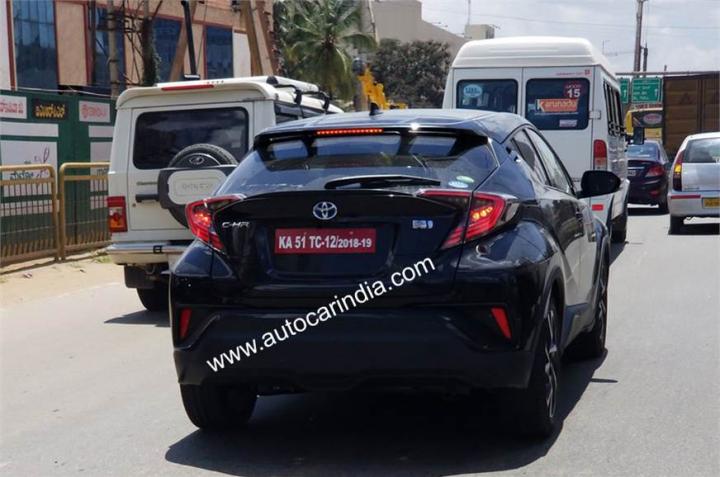










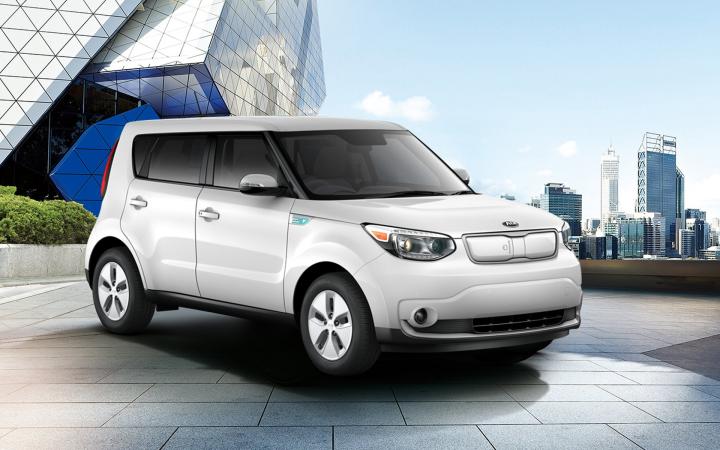
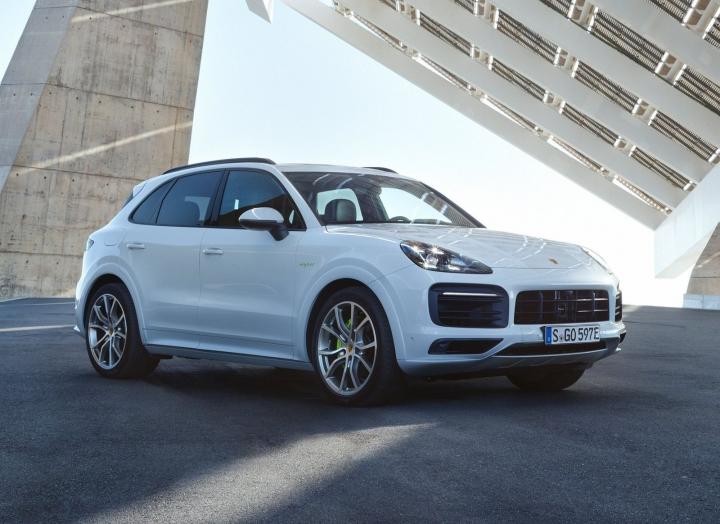

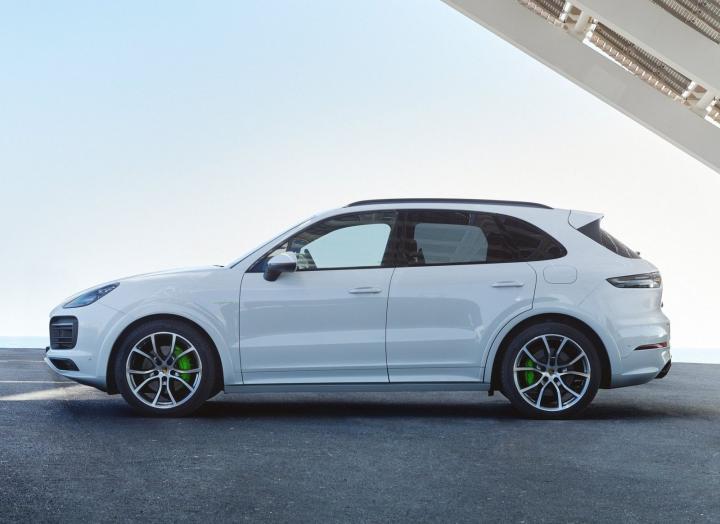





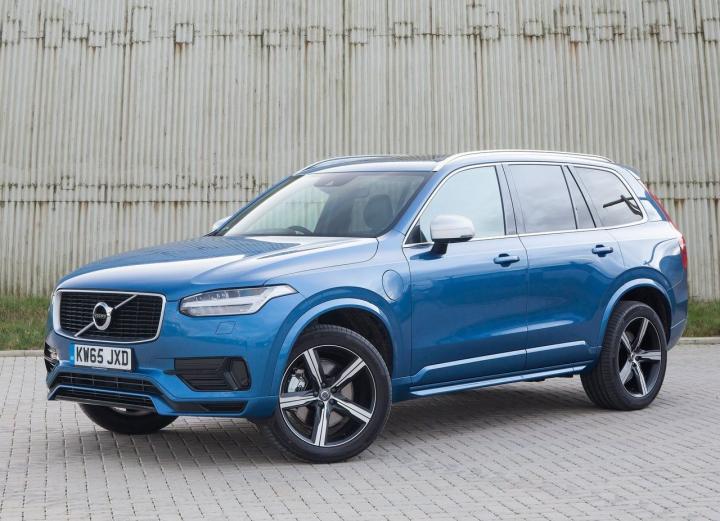


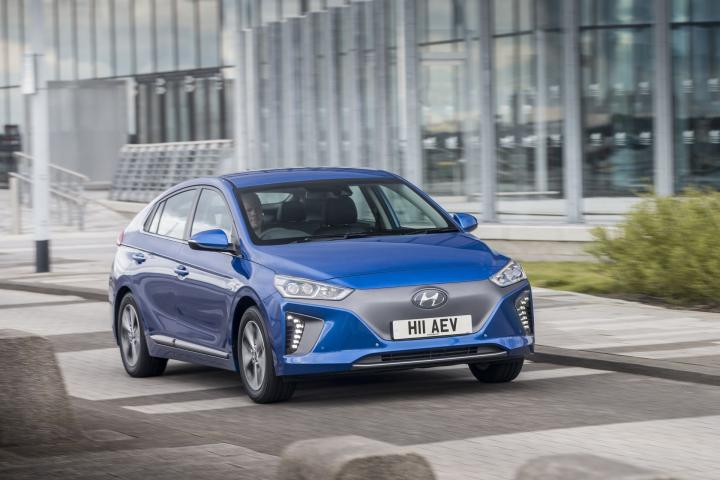
_1.jpg)
_0.jpg)
.jpg)
_1.jpg)
_0.jpg)
.jpg)
